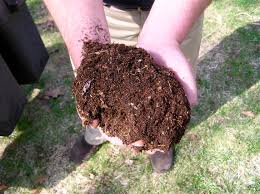By Sara Williams – Saskatchewan Perennial Society
Once you’ve tilled your existing soil to a minimum depth of 15 cm (6 in.) (more is better), you’re ready to add topsoil, soil amendments or a combination of these. Add a minimum depth of 15 cm (6 in.) for lawns. For flowerbeds or mixed borders of perennials and shrubs, add 30 to 45 cm (12 to 18 in.). If this seems like a lot, visualize the root balls of most shrubs or even perennials such as peonies or delphiniums.
If your existing soil is poor and verging on unworkable, you’re well advised to go with topsoil. If it’s predominantly loam, you will benefit more from added soil amendments.
In either case, start with adding about 10 cm (4 in.) of topsoil or amendment to the existing soil, rototill to establish a gradient and avoid layers, add more of the topsoil or amendment, till again, and continue in this fashion until the desired depth has been reached.
There are reputable topsoil dealers with proven customer satisfaction. Ask friends, neighbours, or coworkers for a recommendation. If in doubt, it’s best to meet your topsoil face to face before purchasing. Make an on-site field visit and ask if you can take a small amount (half an ice cream pail) home.
Check for salt content. Excess salt is often indicated by white powder or crystals on the dried soil A high salt content stunts plant growth. This might not be apparent on a load of moist topsoil, but generally shows up once the soil is dry.
Weeds, especially perennial weeds such as thistles and quack grass, can introduce new problems to your yard. If quack grass rhizomes or other long white roots are present, that’s grounds for rejection.
Using the soil from your ice cream pail, follow the guidelines in the previous article to determine the soil’s texture and organic matter content. Then place some in a pot and sow seeds with a high germination percentage and quick germination rate (such as grass seed or lettuce,) water and place in bright indirect light. If the seeds germinate and grow as expected, the soil is fine. If the seedlings are stunted or fail to germinate, the soil may have a high salt content or residual herbicides may be present. If a multitude of weed seedlings emerge, it’s an indication of weed seed contamination.
If your existing soil is a loam, or a sandy or clay loam, you may only need to add soil amendments or materials that increase drainage, productivity, workability, nutrient or water-holding ability.
If your soil is predominantly sand, add as much coarse organic matter as possible such as home-made, commercial or municipal compost; well rotted manure; or coarse peat moss. Coarse peat moss has been sifted or screened the least, is stringy and chunky rather than powdery, and may contain bits of sticks. You may have to order it and it may be slightly more costly than the powdery type, but it is peatmoss is much more effective and longer lasting.
If you have a predominantly clay soil, add equal volumes of coarse organic matter and “sharp” (or coarse) sand. Look at the sand particles under a magnifying glass. The particles should be large and their edges irregular or jagged. Avoid using fine sand with small and round particles. Never add sand alone to clay or you will end up with something resembling concrete. And always thoroughly incorporate the amendments into the soil. Do not leave them layered.
Although new soil amendments appear on the market with alarming regularity, there are few if any “miracle” soil cures. Neither perlite nor vermiculite are recommended for outdoor use. They become ineffective within a season or two and may compound existing soil texture problems.
Sara Williams is the author and coauthor of many books including Creating the Prairie Xeriscape, Gardening Naturally with Hugh Skinner and, with Bob Bors, the recently published Growing Fruit in Northern Gardens. She continues to give workshops on a wide range of gardening topics throughout the prairies.This column is provided courtesy of the Saskatchewan Perennial Society (SPS; saskperennial@hotmail.com ). Check our website (www.saskperennial.ca) or Facebook page (www.facebook.com/saskperennial) for a list of upcoming gardening events


